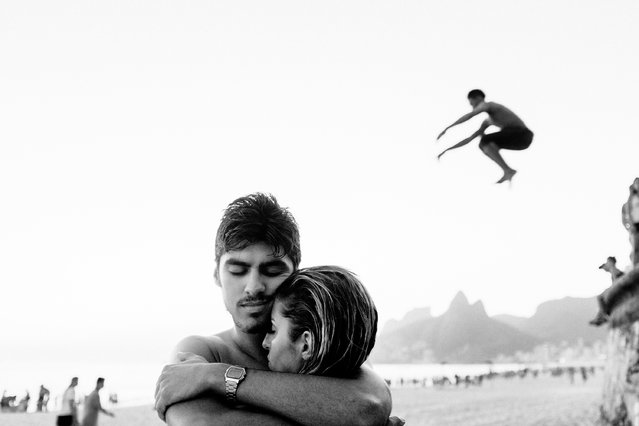
David Alan Harvey’s shots of Rio and Bahia, taken over the course of a decade, look beyond the cliches of bikini babes, crime-ridden favelas and Christ the Redeemer. Here: Rio de Janeiro, Ipanema beach. David Alan Harvey, founder of Burn magazine and a member of Magnum, has spent 10 years photographing the wild vitality and natural beauty of Bahia and Rio. He describes each of his images: “Wilson Crispim, a parkour artist, had just made about eight super jumps for me. He said he was exhausted. I told him fine, so I was just shooting my friends on the beach. Out of the corner of my eye I saw Wilson running to make another jump. I’ve learned that things are never over until they are really, really over”. (Photo by David Alan Harvey/The Guardian)
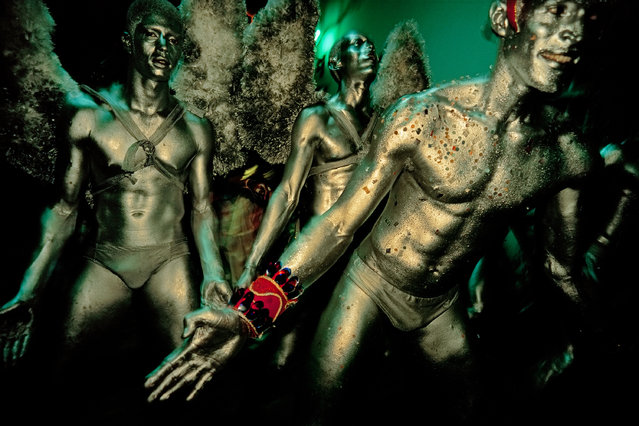
Salvador, Bahia, Carnaval time. “I made friends with these men long before they went to the street parade. Why? Because I always want to be a part of the action rather than shoot from the sidelines. So I ended up being taken in, so to speak, and was able to be in the middle of the parade. This was shot with 50 ISO Velvia film and my trusty little hot-shoe flash, which I always used with slow film and slow shutter speed in cases like this where it was almost pitch dark”. (Photo by David Alan Harvey/The Guardian)
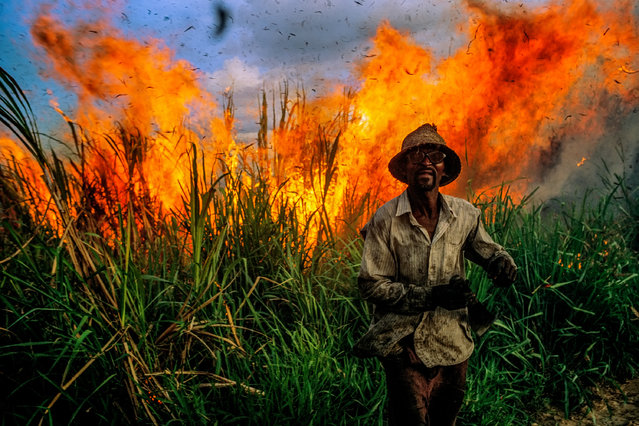
Bahia, sugar cane plantation. “I spent several days with the hard-working cane cutters. Setting fire to the cane to make it easier to cut later is a standard practice. As usual, I waded right in to see up close this burning of the cane. Everything was fine until suddenly the wind shifted, sending the flames right in our direction. The workers started to run for their lives. I had to make a fast decision: run or shoot. I did both. Finally the heat was overwhelming. My metal Leica was burning my hands. Yet I knew I had to get this picture”. (Photo by David Alan Harvey/The Guardian)
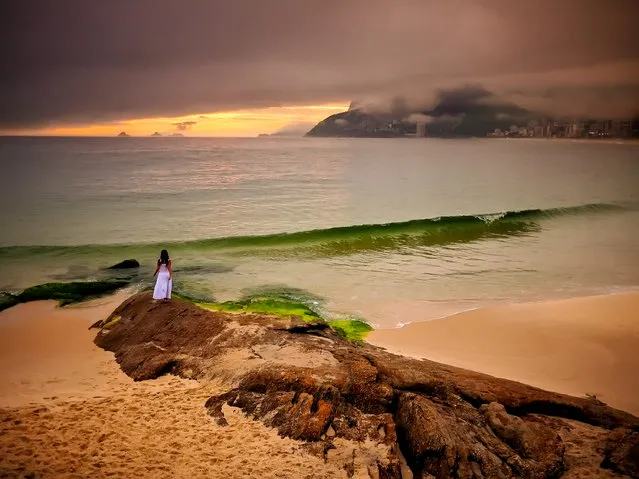
Ipanema Beach, Rio de Janeiro. “A rainy day in Rio and nobody goes out! Of course, I love rainy-day light because I know special things can happen. I went to Ipanema with my assistant and she went out on to Arpoador rock. The rain let up for a bit, and the magic light gave us this colour palette”. (Photo by David Alan Harvey/The Guardian)
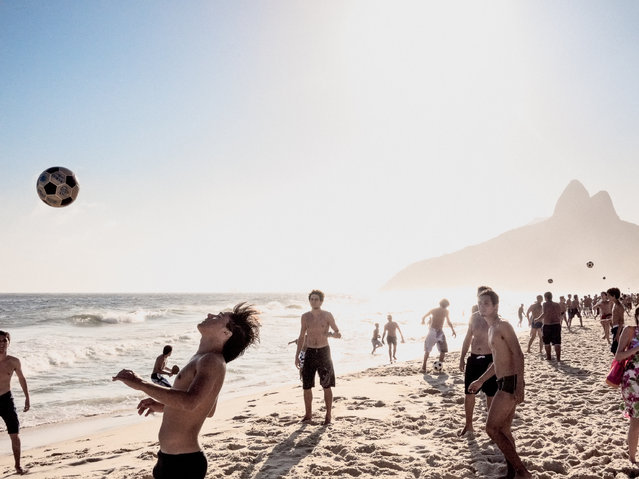
Ipanema beach, Rio de Janeiro. “Every afternoon, kids form small groups and kick a soccer ball around playing altinha, an afternoon ritual right up until sunset. Vidigal mountain is the backdrop”. (Photo by David Alan Harvey/The Guardian)
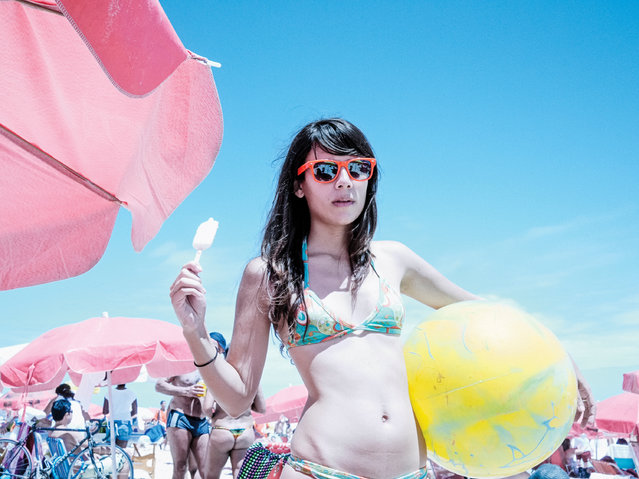
Ipanema beach, Rio de Janeiro. “Life is simple, at least for a short moment, on a beach filled with thousands of people. This was the cover of the my (Based on a True Story) book, and another frame from this day was on the cover of NatGeo Brazil”. (Photo by David Alan Harvey/The Guardian)
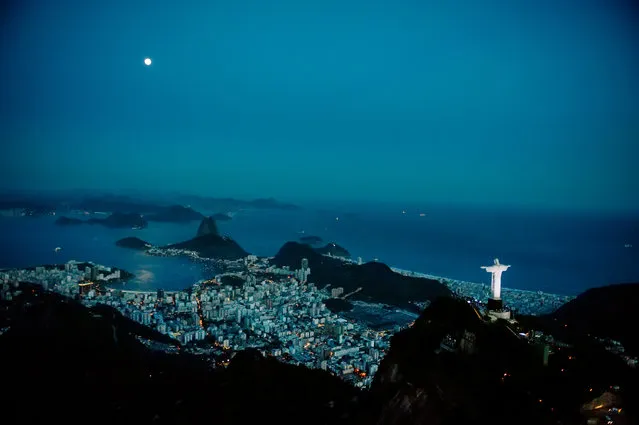
Corcovado with its iconic Christ the Redeemer statue overlooking Rio de Janiero. “Visible from nearly every part of the city, and here sharing the skyline with the moon”. (Photo by David Alan Harvey/Magnum Photos/The Guardian)
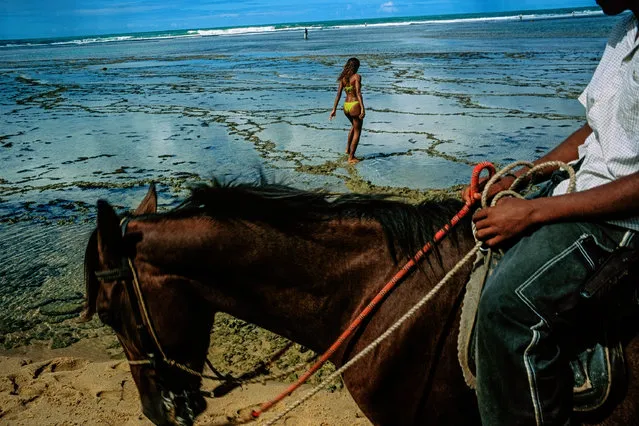
Praia du Forte, Bahia. “This was the lead picture for a National Geographic story on Bahia, because it was both mysterious as well as a “geography” picture showing where the slaves arrived from Nigeria. Beach pictures seem like they should be easy to take, but for me they are actually quite difficult. Too easy to fall into cliche. When I saw the kid coming on the horse, I quickly ran to see if I could make something with a woman in a bikini that was not a bikini shot”. (Photo by David Alan Harvey/The Guardian)
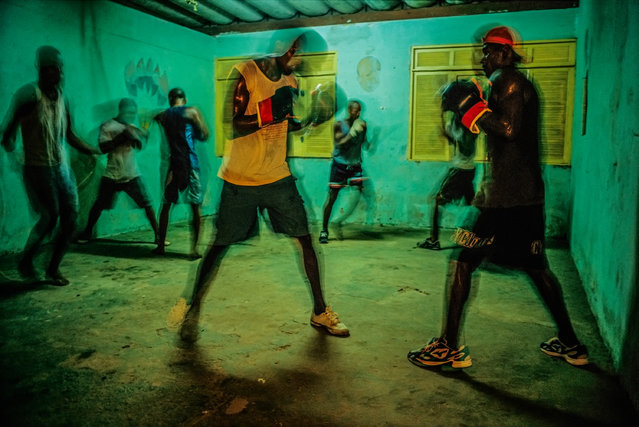
Salvador, Bahia. “I often shoot in the favelas in Brazil. Not to take pictures of poverty, but to show the many activities going on which show another spirit. Boxing practice in one of the favelas seemed like a good way to go. Many favelas are rich with cultural programmes”. (Photo by David Alan Harvey/The Guardian)
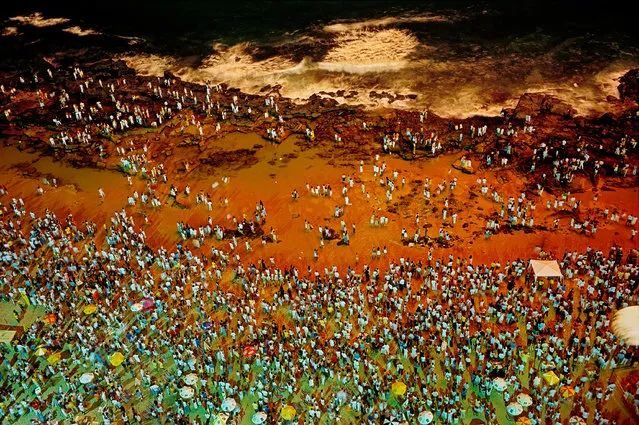
Salvador, Bahia, New Year’s Eve. “Light from fireworks brightens the beach scene as I shoot from the top of a tall building near the beach. Almost everyone is dressed in white in celebration of the New Year and to honour Yemenja, goddess of the sea. I never have a tripod, that’s just not normally the way I work, so I borrowed one for this shot using Velvia film”. (Photo by David Alan Harvey/The Guardian)
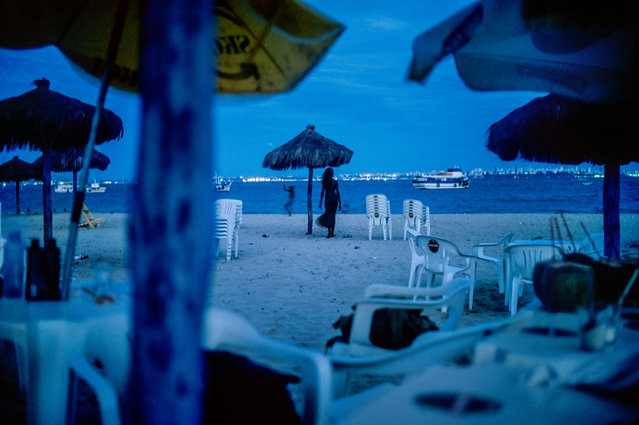
Salvador, Bahia. “Where is she going? I liked shooting with virtually no light, even with Velvia film ISO 50 as here. Using a beer bottle as a tripod, I made a few images of my friend Raquel long after the sun had set. Bahia is magic. Bahia is key in the history of Brazil. The first Africans were brought to the continent in the bay in this photograph”. (Photo by David Alan Harvey/The Guardian)
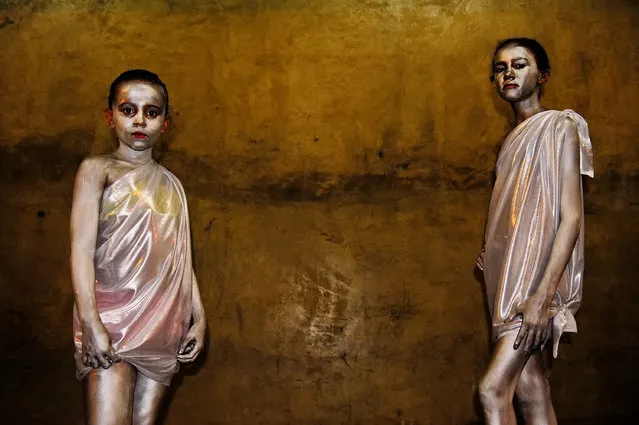
Rio de Janeiro, kids day at Carnaval. “I find that going to any event “before the event” is when interesting pictures can be made. Once these kids were actually in the parade, it was less interesting for me. These young girls were getting prepped by their mothers and I just asked if I could make a portrait. A small flash emphasised their simple makeup and costumes”. (Photo by David Alan Harvey/The Guardian)
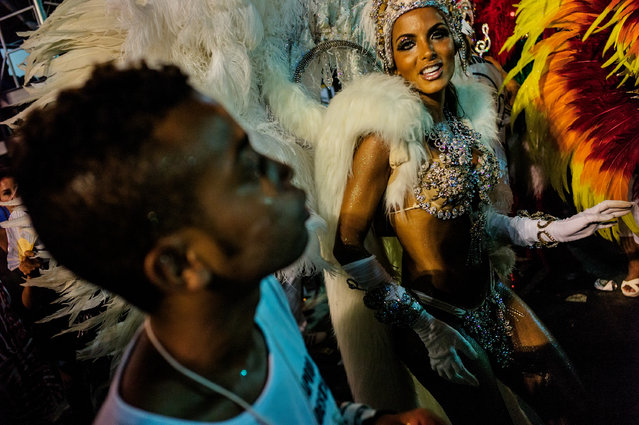
Rio de Janeiro, Carnaval. “Getting inside permission is always the key. I always want to be where nobody can go or should go. Backstage. In the middle”. (Photo by David Alan Harvey/Magnum Photos/The Guardian)
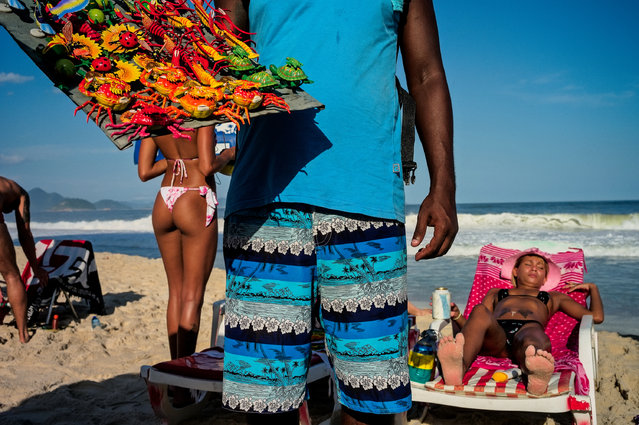
Copacabana Beach, Rio de Janeiro. “Beach sellers are everywhere, all the time, in Rio. Yet this guy with his patterned shorts matching the sea and sky behind, gave me just what I needed to photograph the women nearby. A bikini shot all by itself just doesn’t work. There are lots of bikinis in Rio, and yet I have very few photos to depict this in a way that is not a bikini shot for its own sake”. (Photo by David Alan Harvey/The Guardian)
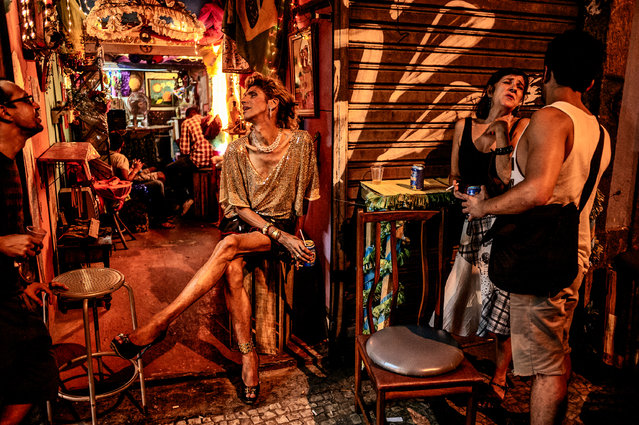
Lapa, Rio de Janeiro. “Lapa is one of the hot nightspots in Rio. This was at about 3am and we were catching a bus back to the beach, and I saw this bar next to the bus stop. My camera was in the bag. The night was over I thought. The light and the characters were so intriguing I just had to make a few frames”. (Photo by David Alan Harvey/The Guardian)
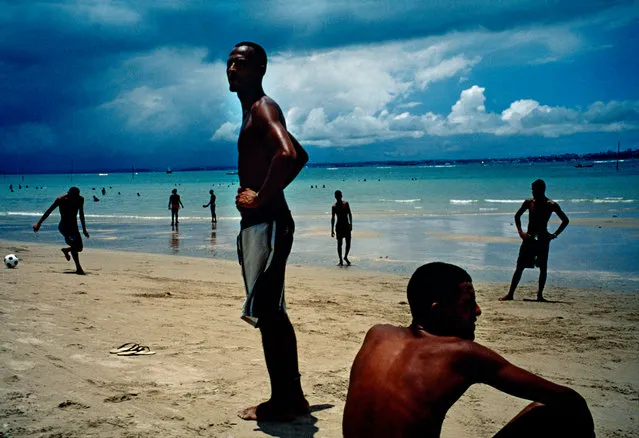
Salvador, Bahia. “There isn’t a Brazilian young man playing beach soccer who hasn’t dreamed of being a superstar. With a great climate all year, many a beach football player has indeed gone on to fame and fortune”. (Photo by David Alan Harvey/Magnum Photos/The Guardian)
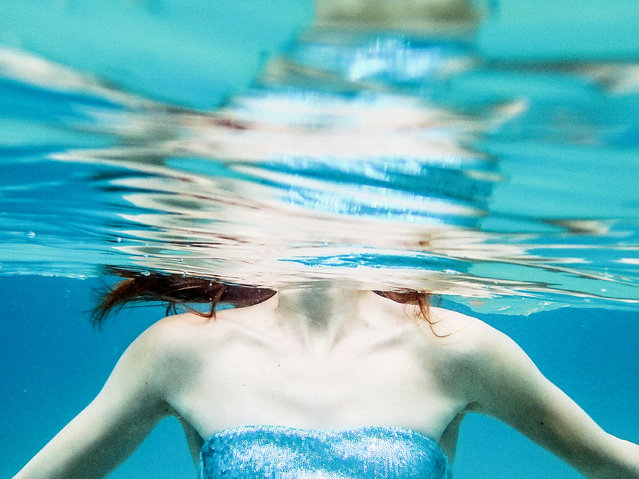
Rio de Janeiro, Brazil. “I had gotten a simple shallow water camera to use for my lady free-divers project in Korea. I realised then that it would be a terrific beach camera, so I went back to Rio to try and work on my Beach Games book. I seriously enjoyed, much to my surprise, how much fun I had in the water making photographs. Something I had never done previously. As usual, my assistants and friends become my models”. (Photo by David Alan Harvey/Magnum Photos/The Guardian)
20 Aug 2016 11:35:00,
post received
0 comments
